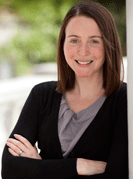The Harvard Family Research Project separated from the Harvard Graduate School of Education to become the Global Family Research Project as of January 1, 2017. It is no longer affiliated with Harvard University.

|
September 17, 2014 The Transition to Afterschool: One City’s Approach to Connecting Young Children and Their Families to Learning and Enrichment Opportunities—Part TwoChristine Patton
|
FINE Newsletter, Volume VI, Issue 4
Issue Topic: Around the Clock: The Power of Anytime Learning
Voices From the Field
Children, families, educators, and community staff often have a number of questions about the transition to school. Families, in particular, ask: What is kindergarten going to be like? Does our child have the skills that he needs to succeed? What can we do to prepare? Families and others also want to learn about and access afterschool options that are available to kindergartners. What enrichment opportunities are available to children beyond normal school hours? How can communities help provide families information on these learning opportunities?
This video is the second in the series, The Transition to Afterschool: One City’s Approach to Connecting Young Children and Their Families to Learning and Enrichment Opportunities, which showcases the promising efforts of a group of stakeholders in Cambridge, Massachusetts, who worked together to provide families with the information that they need as they seek to identify enrichment and learning opportunities that exist after the school day ends. Their efforts resulted in the creation of a four-page resource—the After-School Programs brochure. If you missed the first video, you can view it here.
In this second video of the series, Meghan White, after-school manager for the Division of Childcare and Family Support at the Department of Human Service Programs in Cambridge, Massachusetts, tells us about the steps that stakeholders in Cambridge took to develop the brochure. She describes ways that educators in other cities who are interested in creating a similar resource might take these same actions. On- and offscreen, Meghan shares the following tips to keep in mind while developing a resource like the After-School Programs brochure:
- Make sure that all stakeholders—staff from nonprofit and community-based afterschool programs; educators and administrators from the public schools; families; and staff from locally based family service programs—are represented in the development of the resource. Their involvement will lead to a resource that is meaningful and useful and offers a comprehensive look at all of the afterschool options that are offered your city/town.
- Conduct usability tests—Is it clear to families how they should use the resource?—and seek feedback from families via focus groups and interviews. Their answers will lead to a resource that is user-friendly and meets families’ actual needs.
- Make sure that copies of the resource are widely available to everyone who might benefit from the information the most, particularly at key times. Distributing the brochures in this way will help ensure that you get the information to families in a timely manner. In Cambridge, copies of the brochure were: (a) inserted into the kindergarten information packets that are given to all newly enrolled kindergarten families; (b) given to family liaisons in each of the elementary schools; and (c) delivered to all preschools within the Cambridge Public Schools (CPS) system and the CPS Family Resource Center.
Learn from the collaborative approach of this Cambridge initiative, adapt their strategies, and share your own approaches to engaging families during the transition to kindergarten in our Let’s Talk Transition! discussion board.
This resource is part of the September FINE Newsletter. The FINE Newsletter shares the newest and best family engagement research and resources from Harvard Family Research Project and other field leaders. To access the archives of past issues, please visit www.hfrp.org/FINENewsletter.
